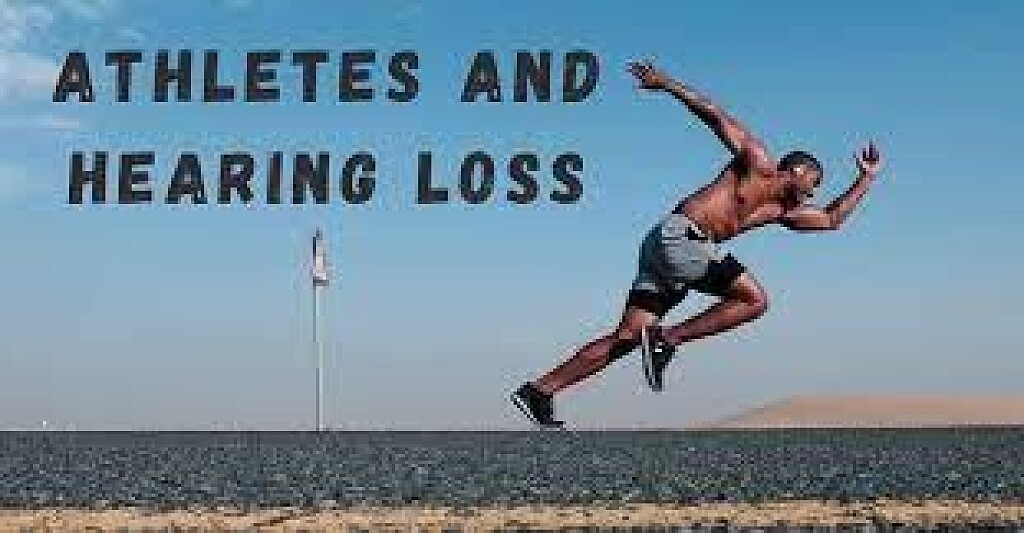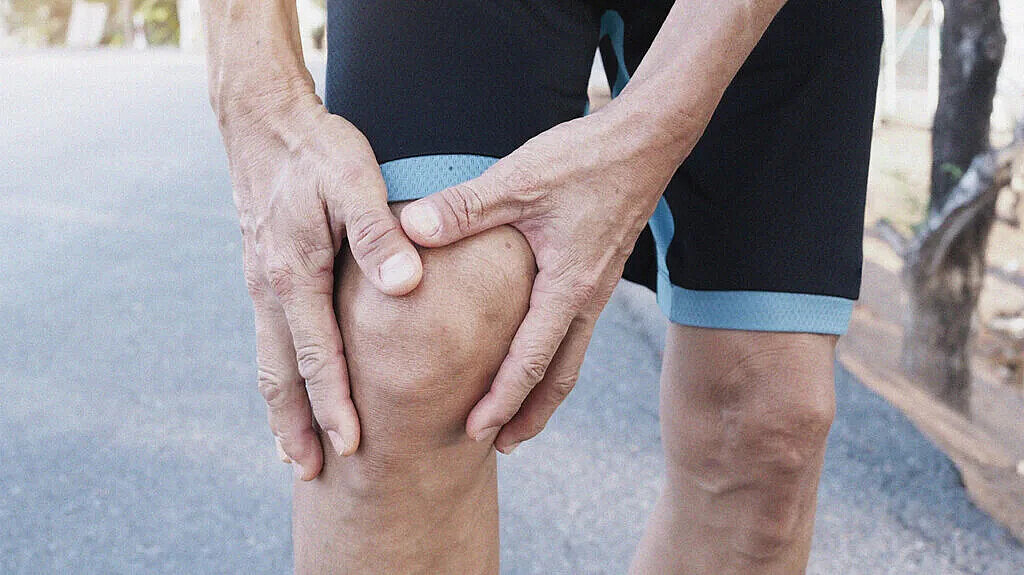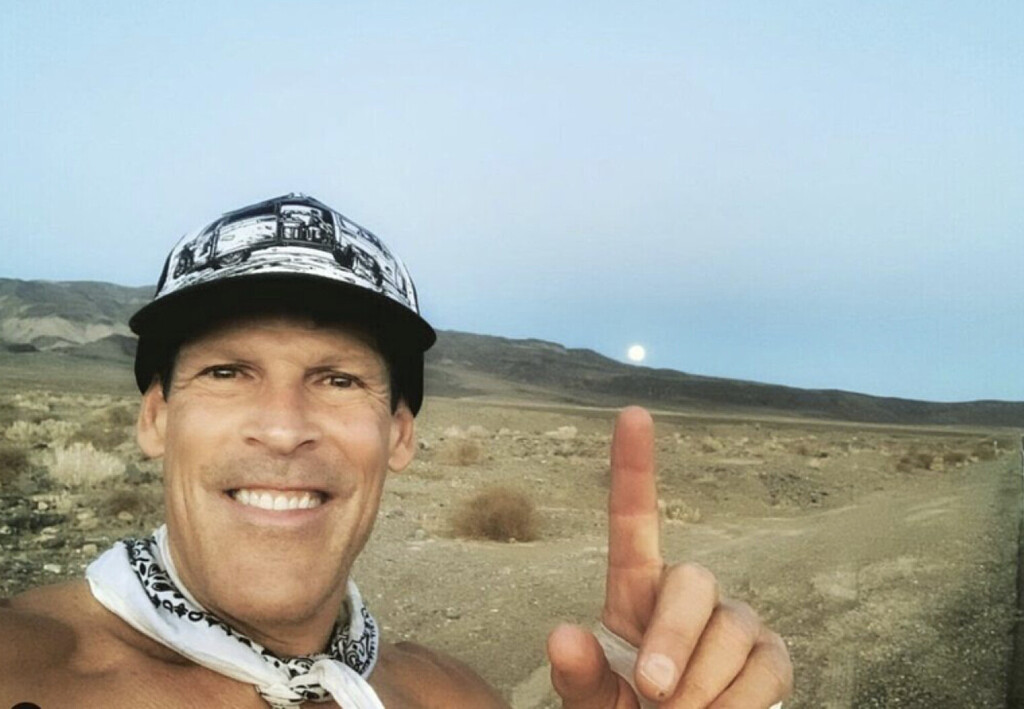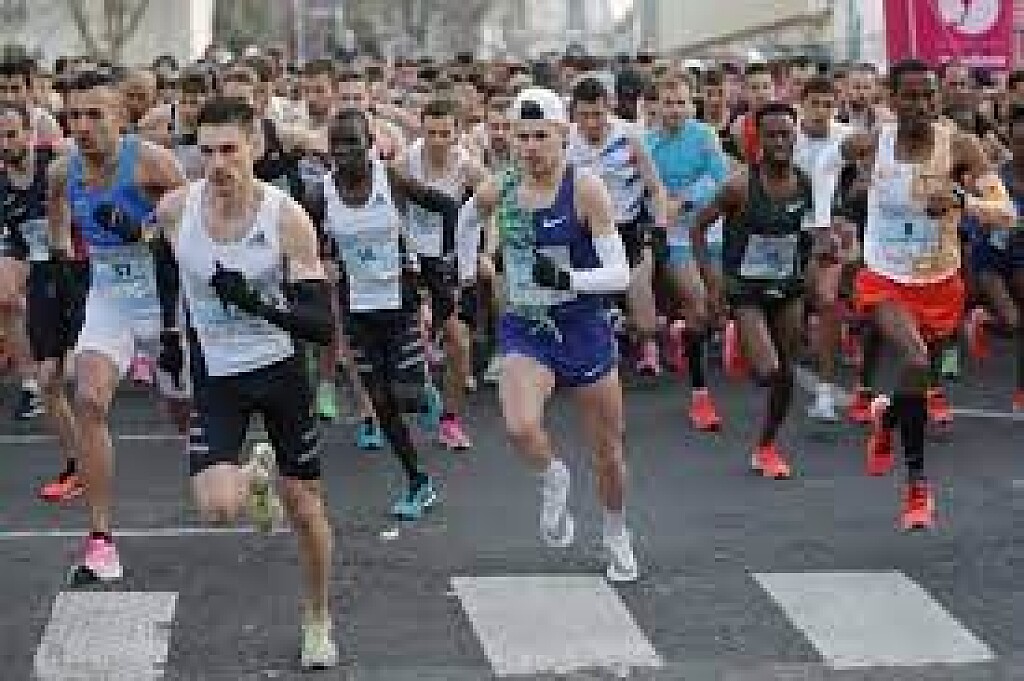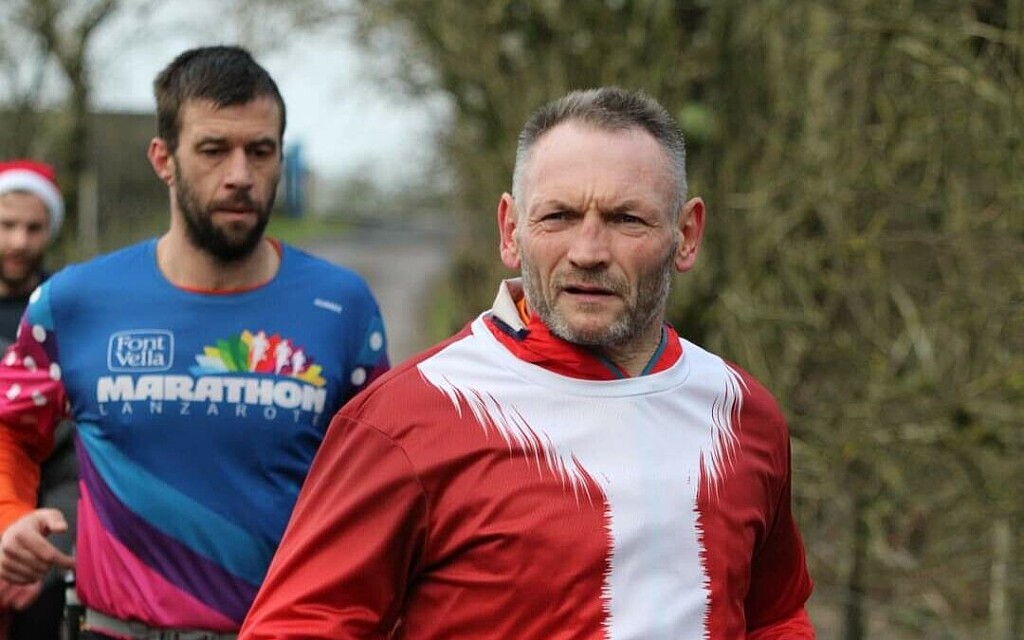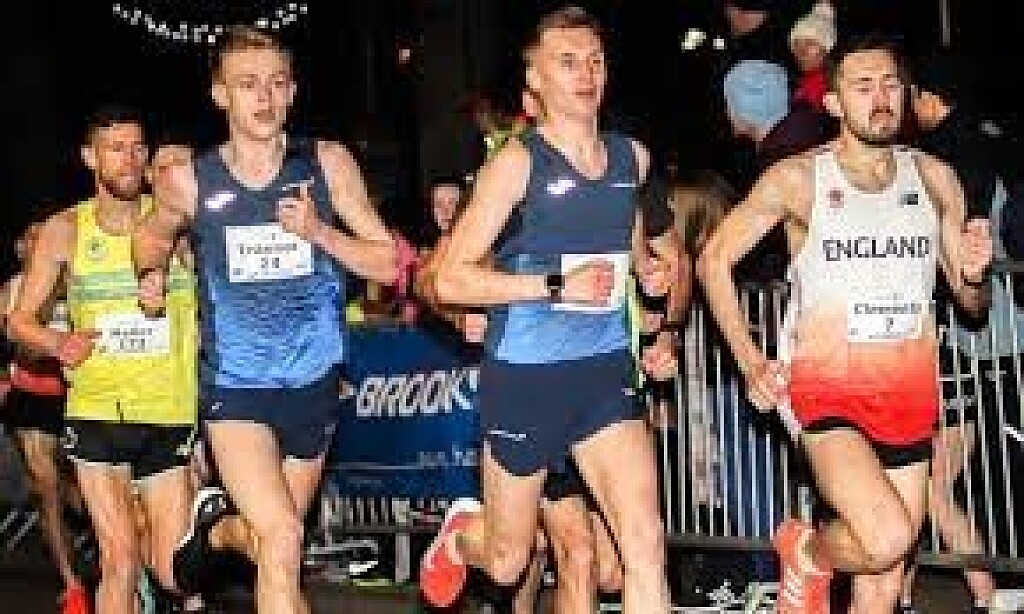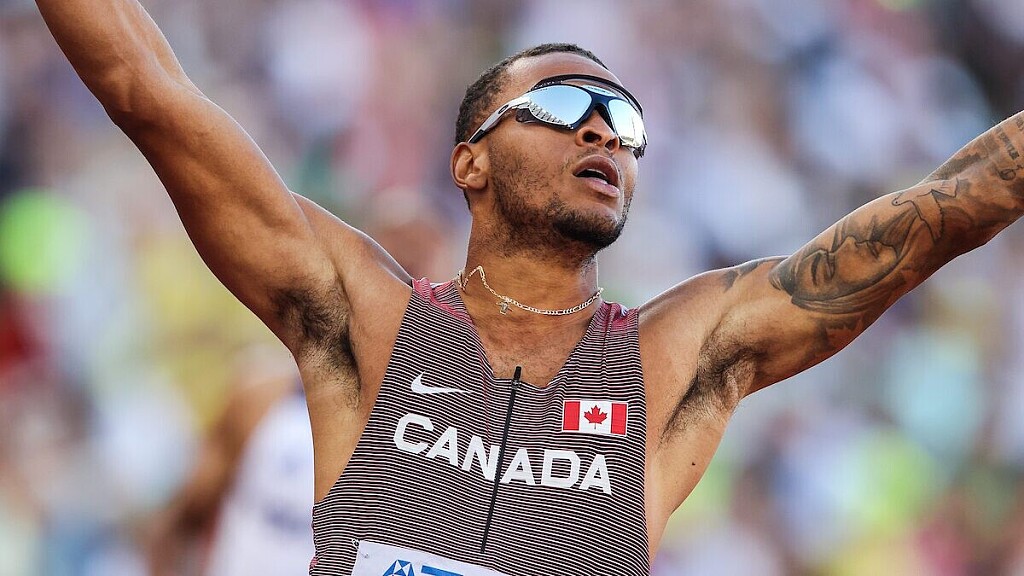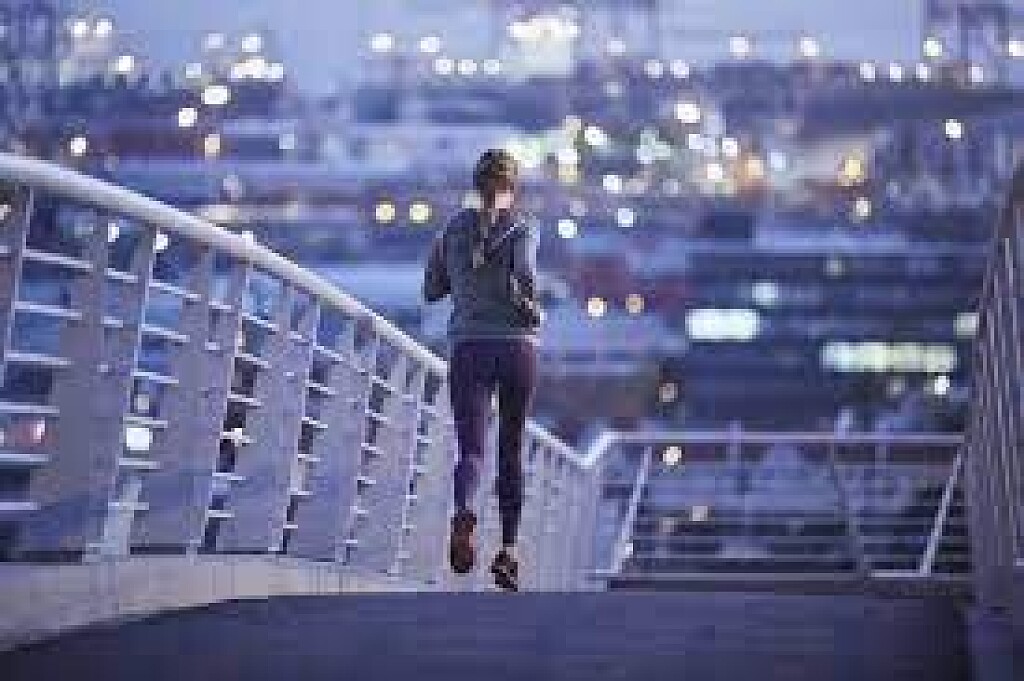Running News Daily
Top Ten Stories of the Week
1/7/2023
These are the top ten stories based on views over the last week.
What You Need to Know About Running and Hearing Loss
How to handle—and prevent—this increasingly prevalent quality-of-life condition.
Last winter, I was one of eight people on a Sunday long run. We spent most of the run in four groups of two. When I got home and my wife asked about the run, I said I’d spent most of it beside Erin, an ob-gyn who loves to discuss books. My wife asked about Erin’s recent work and reading list. I said I didn’t really know, even though we’d just spent more than an hour talking with each other. That is, unfortunately, the norm for me on group runs. I have a form of severe hearing loss One manifestation is that it’s extraordinarily difficult for me to follow a conversation when there’s competing background noise. That includes restaurants and movies with music atop dialogue. But it also means something like that group long run, where Erin and I were sandwiched by lively conversations ahead of and behind us.
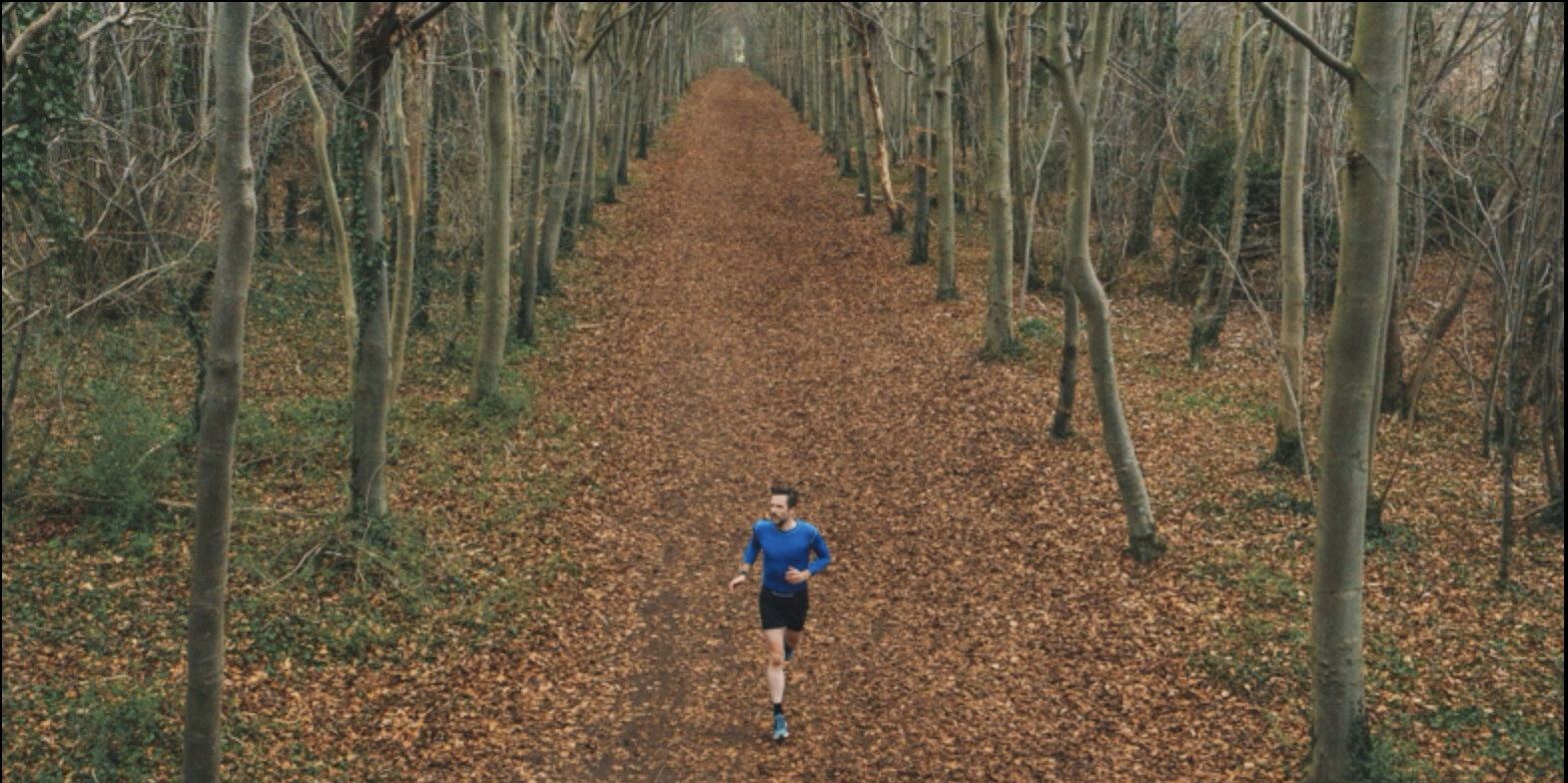
Hearing loss intrudes on nearly every aspect of my life. Some consequences are trivial (not hearing beeps from my running watch), some are moderately annoying (always seeking the quietest parts of public spaces), and some are depressing (regularly missing sounds and experiences that bring joy to others). There’s also the knowledge that my hearing is likely to continue to deteriorate, which puts me at risk for other conditions that could further erode my quality of life.
As the world gets increasingly louder, hearing loss is a growing problem. Here’s what it’s like to be a runner with hearing loss, what can be done about it, and, probably most importantly, how to lower your risk of winding up like me.
Running and Hearing Loss
Running’s health benefits are extensive and, in some cases, unexpected: Did you know that runners tend to have fewer cataracts and are less likely to develop glaucoma? Unfortunately, there’s no evidence that regular running helps lessen your chances of developing hearing loss. Indeed, as we’ll see, one key aspect of many runners’ routines can elevate their risk.
The most common type of hearing loss is sensorineural, in which there’s permanent damage to the inner ear or the nerve that connects the ear to the brain. Noise exposure and age are the two leading causes of sensorineural hearing loss. Between the din of much modern life and an aging population, it’s not surprising that 15 percent of Americans 18 and older report trouble hearing.
It’s also not surprising this is no longer just an older-person issue. “We’re seeing more kids high-school age with noise-induced hearing loss than in previous generations because it’s so prevalent to have things in your ears,” says Carissa McCauley, a runner and doctor of audiology at Rutland Regional Medical Center in Vermont. Research published last fall estimated that more than 1 billion people aged 12 to 34 are at risk of developing noise-induced hearing loss.
Hearing loss is inconvenient, for those with the condition and the people they try to communicate with, and, in some environments, unsafe. Untreated hearing loss increases your risk of cognitive and functional decline, social isolation, and depression, especially in middle age and beyond, according to Sarah Hill, a runner and audiologist who works for a hearing-aid manufacturer in Boston. McCauley adds that untreated hearing loss will likely get worse faster.
One tricky aspect of hearing loss is that it’s insidious. Without regular testing, you’re left with subjective experiences of poor communication: the restaurant’s music was cranked, it’s loud inside a car on the highway, your partner likes to conduct conversations from two rooms away. It’s easy to convince yourself the mishearing was a one-off rather than part of an increasing pattern. This is a different form of coming to grips than, say, realizing words on a page or screen are blurry enough that you need glasses.
The cause and progression of my hearing loss are fairly typical. As I teen, I played drums while wearing maxed-out headphones several hours a week. In my 20s and 30s, I saw hundreds of indie rock shows in bedroom-sized clubs. I often had tinnitus for a day or two after these exposures. (Tinnitus is usually defined as high-pitched ringing in the ears, which is an adequate description of mine, but it can present in many ways.) The tinnitus became permanent around 15 years ago. Then I had increasing difficulty following nearby conversations in loud environments. Also, being in such environments started to cause days-long spikes in the severity of my tinnitus. Finally, I found myself straining to understand my wife from even a few feet away in our quiet house.
Now, in my late 50s, I have profound loss at higher frequencies. This means not only that I miss out on things like bird songs and running watch beeps. I also struggle to distinguish certain higher-pitch consonants, such as “s,” “f,” and “h,” especially at the beginning of words. These problems compound when there’s a lot of background noise. It’s not that I can’t hear what others are saying as much as that I can’t quickly make out what’s being said. I guess at some words to see if they make sense in context. But by then people are on to the next sentence, and I’m still processing the previous one while trying to catch the gist of the current one and seeing if it’s reasonably linked to what I think the previous one was. It’s frustrating and exhausting. Sooner or later, I check out.
On runs, I often interject “uh huh” and “right” and “hmm” more in reaction to the tone of what others are saying than the content. If there’s reason to run single file, I scoot to the front to have any chance of following the conversation. If we’re running two abreast, I try to stay farther from traffic to lessen competing sound. If it’s just two or three of us, running with others can be my best hearing experience of the day. Rhythmic breathing tends to introduce pauses in conversation, giving me a better chance to process what’s being said. Large group runs are another matter. I’ve skipped many simply because I don’t feel like having to concentrate so hard just to follow along.
Are you on the road to hearing loss? McCauley and Hill agree that tinnitus is a major warning sign that you’ve been overexposed to noise. “That ringing is noise-induced damage, whether it goes away quickly or two days later,” Hill says. McCauley says that if you experience tinnitus after a given environment, “next time you need to wear hearing protection or avoid it if you can.”
Another warning sign is what’s known as a temporary threshold shift. “That means your hearing sensitivity has declined,” McCauley says. “Everything seems temporarily muffled. That’s another blaring red flag that you were doing something damaging and probably need to stop doing that.”
Constant tinnitus merits getting a hearing test from a licensed audiologist. “Most folks who have tinnitus have some degree of tinnitus,” Hill says. Other signs that you’re a good candidate for a hearing test include:
You frequently ask people to repeat themselves. (Or the people you talk with the most say you keep asking them to repeat themselves.)
You struggle to follow conversations when there’s background noise, such as other conversations, music, an air conditioner, or a television.
You have a harder time understanding children and women, who tend to have higher-pitched voices. Losing the ability to distinguish higher-frequency sounds is often where hearing loss starts.
You turn up the television volume but still can’t understand everything.
You feel like you hear better in one ear than the other.
You have issues with balance or dizziness.
Runners’ Risks of Hearing Loss
In a 2016 Runner’s World survey, 61 percent of respondents said they listen to music or other audio while running. That’s great, given the research showing the performance benefits of running with music. But that can also be problematic if you pump up the volume too much.
“If you have any ringing in your ears after running with music, it’s absolutely too loud,” Hill says. “Also, if you notice that, outside of being tired from running, you’re mentally fatigued in conversations or having trouble paying attention to somebody, it’s probably too loud. Those are signs that your brain is a little overstimulated.”
These recommendations, which are valid at all times, deserve a running tweak: Research presented at a 2014 conference on noise and public health looked at temporary threshold shifts after people listened to music while not exercising, exercised while not listening to music, and listened to music while exercising. The threshold shifts were significantly greater after listening to music while exercising, and included losses at high frequencies. The researchers speculate that decreased blood flow to the cochlea (part of the inner ear with a key role in hearing) during exercise can compound the problems associated with noise alone.
“My thought is, it should be a little lower than you want it to be,” McCauley says about the proper volume for on-the-run audio. “I tell my active patients to put the volume where you want it, and then turn it down at least a click.” This lower setting comes with a safety bonus of greater awareness of what’s going on around you.
Hill offers another solution: bone conduction headphones, which are worn outside your ears and transmit sound while avoiding potential damage to your inner ear. “It’s really hard to make those too loud,” she says. “They kind of max out naturally, so there’s much less of a risk of overexposure to noise.” Hill also appreciates how bone conduction headphones give her greater environmental awareness in busy Boston.
Hearing Aids for Runners
I haven’t been completely forthright so far in this article. The examples of struggling to hear are accurate—if I’m not wearing my hearing aids.
I had my first hearing test in 2007, after two intercontinental flights in three days made my tinnitus constant and more pronounced. The audiologist told me I had mild hearing loss at high frequencies and that it was likely I’d need to learn how to live with the tinnitus. I then waited 10 years for a follow-up. That visit resulted in a prescription for hearing aids.
This part of my story is also typical. Hill says that, when she was in private practice, everyone she recommended hearing aids for should have gotten them earlier, usually by a factor of several years. It’s estimated that at least 28 million Americans who could benefit from hearing aids don’t have them.
So why, as someone with hearing aids, did I struggle to hear my friend Erin during that large group run? Because I wasn’t in the habit of running with them at that point. The audiologist who fitted me with my first pair cautioned against getting them wet. When I told her I’m a ridiculously prolific sweater, she recommended not running with them. Over time, I wore them less and less in everyday life, because the inner ear portion made me feel like I was constantly being tickled by a Q-Tip.
This summer, I learned that, as with running shoes, a lot has changed with hearing aids in recent years. Water resistance is now a common feature. Smaller domes over the inner ear portion eliminate the tickling sensation. I’ve worn my new hearing aids on hours-long hikes and forgotten I had them in until I realized I was catching everything my wife said.
Most importantly, sound quality has improved dramatically. There was a metallic clang to what much of what I heard through my previous hearing aids. (Imagine water dripping on a taut piece of aluminum foil.) Now, I hear what I assume most people hear. Conversations are crisp. Music sounds full rather than compressed. I can sit on the patio and actually hear the birds and crickets that I know are just yards away. Restaurants are still annoyingly loud, but I can understand the people I’m with.
The hearing aids I have, the Phonak Audeo Fit, are also noteworthy in how they reflect two demographic trends—people are getting hearing aids at younger ages, and people are staying active later in life. The Audeo Fit tracks heart rate, daily steps, and time spent in different exercise-intensity zones.
Like most modern hearing aids, the Audeo Fit can connect to phones, televisions, and other gadgets, and it has Bluetooth connectivity. The latter is great, if that’s your thing. But I mostly value them for the human connectivity. Erin, the next time we run together, I promise I’ll really listen.
(12/31/22) Views: 171Runner’s World
Meniscus Tear? How To Get Back Out There
Strenuous exercise can tear the meniscus, a layer of cartilage in the knee — and certain gentle exercises may help with recovery.
Meniscus tears are fairly common; research suggests that around 61 in 100,000 Trusted Source people in the United States have this health issue.
Below, we look into this injury and describe nine exercises that may help strengthen and rebuild a torn meniscus. Be sure to consult a doctor before trying them.
What is a meniscus tear?

The meniscus is a layer of cartilage in the knee that has several important functionsTrusted Source. It helps:
the knee joint fit together correctly
absorb shock from walking and other activities
provide stability to the knee
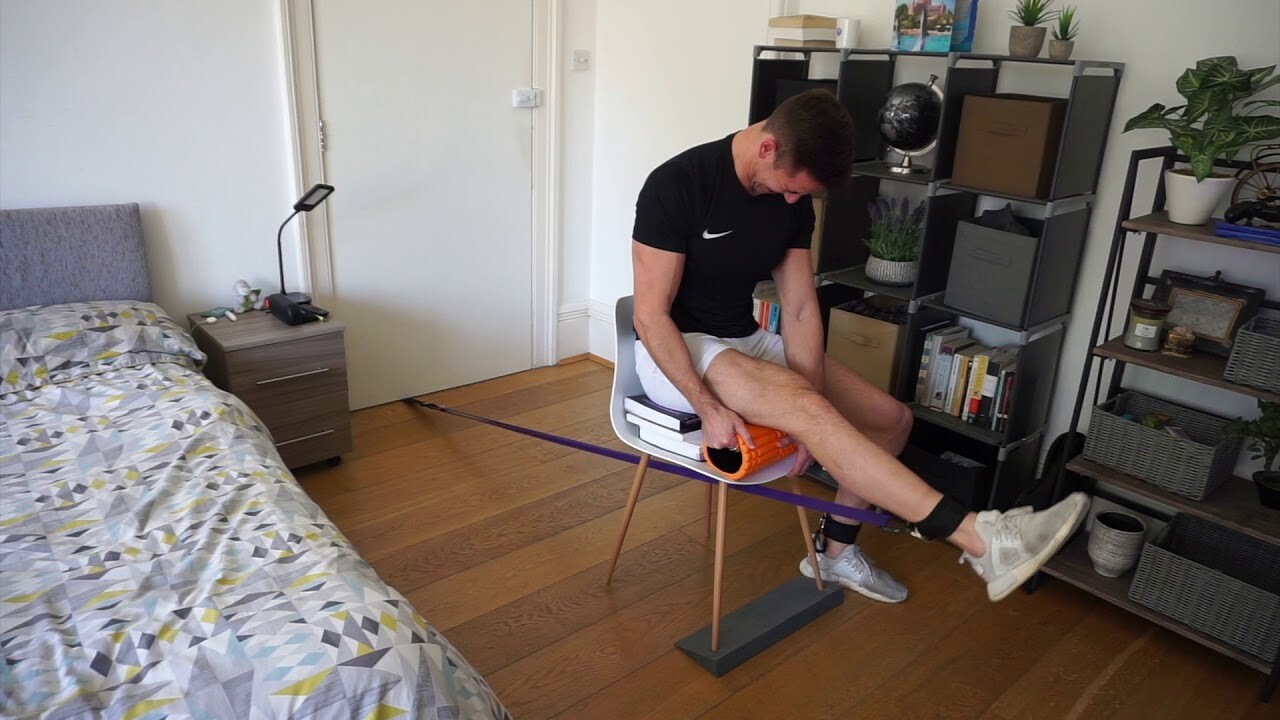
A tear can occur due to too much strain, sometimes as a result of exercise. Common symptoms include:
pain
swelling
clicking
catching
locking
weakness
This injury is more common among military personnel on active duty and other people who are very active. The risk is generally higher among males over 40 years old.
Recovery times
Less severe meniscus tears can take 4–8 weeks to heal. Others may require surgery and take as long as 6 months.
8 exercises to try
For people with less severe tears, doctors may recommend gentle exercises.
It is normal for these exercises to cause a little discomfort. If any exercise causes pain, however, stop doing it.
1. Mini squats
Mini squats can help strengthen the quadriceps, large muscles at the front of the thigh, without putting too much pressure on the knees.
To perform mini squats:
Stand with the back, shoulders, and head against a wall.
The feet should be shoulder-width apart and about 1 foot away from the wall.
Slightly bend the knees, bringing the buttocks toward the ground.
At around 15 degrees of the bend, stop.
Hold the position for 10 seconds, then slowly bring the body back up to the starting position, keeping the back and shoulders against the wall.
Perform 2 sets of 8–10 repetitions. Rest for between 30 seconds and 1 minute between the sets.
Keeping the back and shoulders against the wall is key, as it reduces stress on the knees.
2. Quadriceps setting
This is isometric, meaning that it exercises the muscles by keeping the body in a static position.
To perform the quadriceps setting:
Sit or lie flat on the ground, with the legs extended away from the body.
Contract the quadriceps, using them to push the backs of the knees toward the floor.
Hold this position for 10–20 seconds.
Perform 2 sets of 10 contractions, resting for between 30 seconds to 1 minute between sets.
3. Straight leg raise
This exercise stretches the hamstrings and strengthens the quadriceps.
To perform straight leg raises:
Lie on the floor with the left foot flat and the right leg extended.
Keeping the back and pelvis in a neutral position, flex the right foot and tighten the right thigh muscles, slowly lifting the right leg off the floor.
After lifting the right leg to around 45 degrees, slowly lower it back to the floor.
Perform 2 sets of 10 repetitions before switching to the left leg.
4. Prone hang
This exercise works to increase the knee’s range of motion.
To perform the prone hang:
Lie facedown on a bed, with the legs extended over the edge.
Let gravity slowly pull the left knee down until it is fully extended.
Hold this position for 15–30 seconds, before bringing the left knee back up.
Repeat this three times, then do the same for the right knee.
5. Hamstring curls
This exercise strengthens the hamstrings, which are muscles at the backs of the thighs.
To perform hamstring curls:
Lie on the stomach, keeping the legs straight.
Slowly bend the right knee, lifting the right foot toward the buttocks.
Slowly lower the right foot.
Perform 2 sets of 8–10 repetitions, resting for around 30 seconds.
Repeat this with left leg.
6. Hamstring heel digs
This is another hamstring exercise, and it can help build strength in the abdominal muscles.
To perform hamstring heel digs:
Lie on the back, with the knees bent and the feet flat on the floor.
Flex the feet so that only the heels touch the floor.
Dig the heels into the ground, slowly sliding them about 5 inches from the body.
Slide the heels back, returning to the starting position.
Perform 2 sets of 8–10 repetitions, resting for between 30 seconds to 1 minute between sets.
7. Standing heel raises
This exercise is good for building strength in the calf muscles.
To perform standing heel raises:
Stand with the feet hip-width apart, with the hands resting on a heavy, solid piece of furniture for support.
Slowly lift the heels off the floor as far as is comfortable.
Pause in this position, then slowly lower the heels to the floor.
Perform 3 sets of 8–10 repetitions, resting for 30 seconds to 1 minute between sets.
8. Leg extensions
Leg extension exercises build strength in the thighs. A person can safely perform them multiple times a day.
To perform leg extensions:
Sit on a chair or bench with the feet flat on the floor.
Flex the right foot then lift it, straightening the right leg.
Slowly lower the right foot to the starting position.
Repeat this 10 times, then do the same with the left leg.
When to contact a doctor
Anyone with symptoms of a torn meniscus should seek the advice of a doctor, especially if the symptoms do not improve.
Only begin gentle exercises, such as those above, after consulting a doctor to make sure that it is safe.
(12/31/22) Views: 136Medical News Today
Top 10 most popular running stories of 2022
Tt’s time to recap the most popular running stories. This year, the running community saw a lot of firsts and controversies. It was the first time we were made aware of a 6-year-old running a marathon; it was also the first time we saw a runner who chain-smoked during a marathon. As many of us returned to our favourite races and conquered new goals, we can’t ignore some of the mind-boggling stories.
Here is a countdown of the top 10 most popular running stories of the year.
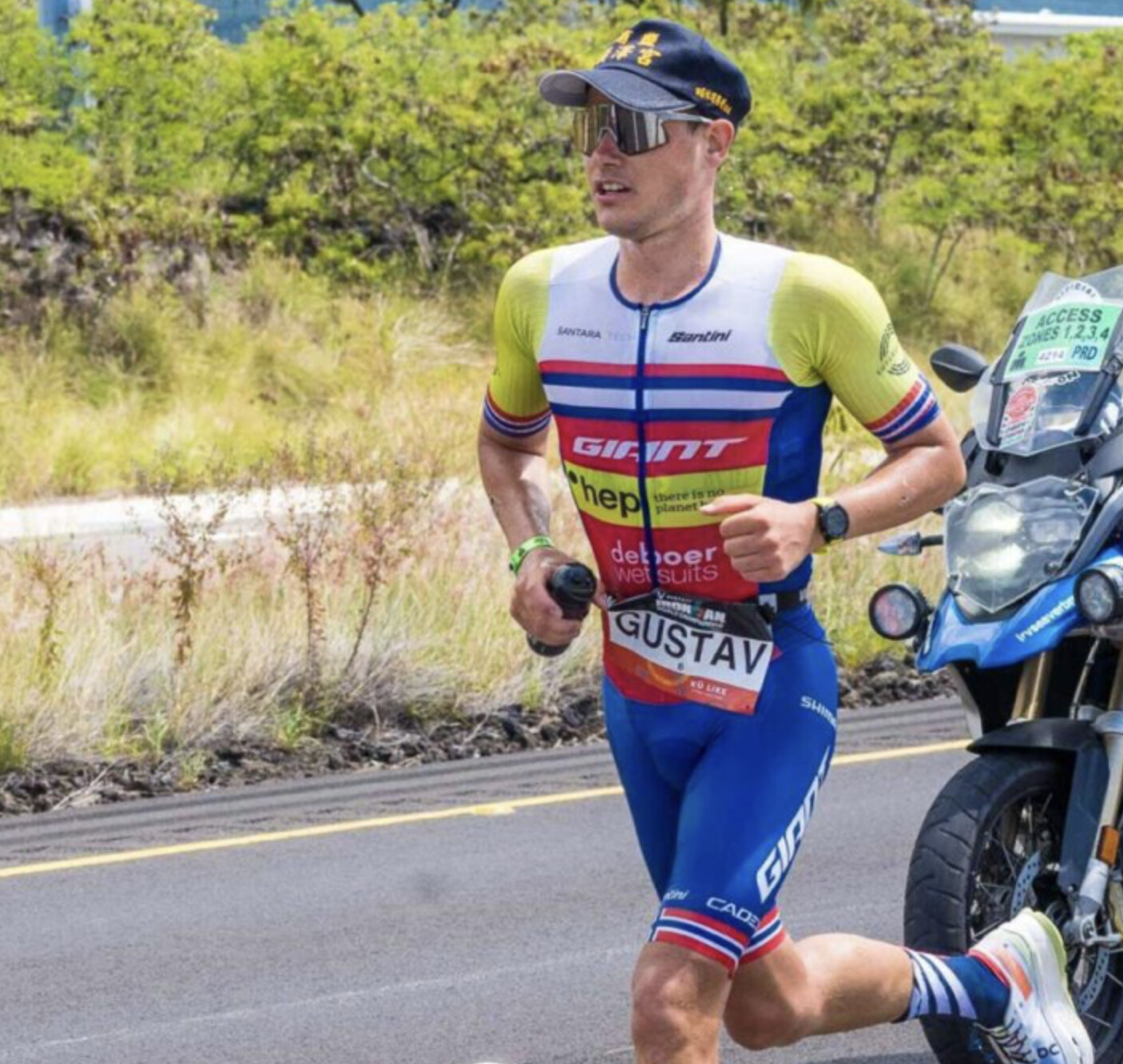

10) Ironman World Championship champion’s “chunky” shoes spark controversy
In October, Norway’s Gustav Iden made headlines as he ran a 2:36 marathon after a 180-kilometre bike and 3.8 km swim, earning his first Ironman world championships title. It wasn’t only his wild time that turned eyes, but the On Cloudboom Echo 3 carbon-plated running shoes that he wore, which have a reported stack height of 50 mm (legal for Ironman races).
9) Six-year-old’s marathon sparks controversy on social media
In May at the Flying Pig Marathon in Cincinnati, Ohio, a family of eight from Bellevue, Ky., all completed the 26.2-mile race together in eight hours and 35 minutes, including two children aged 12 and six. The family took on tons of criticism over the advisability of allowing a six-year-old to cover the marathon distance. Many experienced marathoners and coaches, including Lee Troop and Kara Goucher, have weighed in online, stating that six is too young for the marathon.
8) Turkey trot runner takes out his competitor at finish line
In November at a local 10K turkey trot, Xavier Salvador of Washington, D.C., impeded the line of Jack Huber of Delmar, N.Y., with 50 metres to go, after noticing Huber threatening to pass him on the right. Instead of checking if Huber was OK after the fall, Salvador made sure his GPS watch was stopped.
7) Barkley Marathons ends with no finishers (again)
In March, for the fifth straight year, the Barkley Marathons in Frozen Head State Park near Wartburg, Tenn., came to an end with zero finishers, after the only remaining two competitors, Karel Sabbe and Greig Hamilton, bowed out on their fourth loop (of five) of the 20-plus mile course. Sabbe’s fourth loop was one for the history books, as he was found off-course in another town, chatting with a garbage can who he thought was a person.
6) ‘Ultramarathon man’ Dean Karnazes attacked by coyote during 150-mile race
In August, acclaimed ultrarunner and author Dean Karnazes posted a video that he was attacked by a coyote during Headlands 150-mile Endurance Run, held outskirts of San Francisco. Karnazes said was OK, but that he had several cuts on his face and body from the attack.
5) “Poopgate” continues as Arizona high school bans track use
In February, human feces were found under the bleachers at the Red Rock High School track in Sedona, Ariz., which resulted in a ban on public use. In the aftermath, there was plenty of buzz and finger-pointing on social media about the ghost pooper’s possible identity, using the hashtag #poopgate. To this day, it is still a mystery who did the deed.
4) California man runs an ultramarathon in roundabout
In November, a runner from Healdsburg, Calif., was getting tired of his usual running routes, so he went out on a six-hour, 58-kilometre run around the local roundabout, never once switching directions. The best part is that, a week later, he did it again, in the opposite direction.
3) WATCH: Florida high school runner gets sucker punched mid-race
In March, we saw a candidate for “wildest video of the year” when a high school runner at a Florida track meet was sucker punched and knocked to the ground by another athlete during a 1,600m race.
2) Colorado runner wins all four races at Disney Marathon weekend
In January, Brittany Charboneau of Colorado climbed to the top of the podium on four occasions during the Disney Marathon Weekend in Orlando, Fla. She won the 5K, 10K, half-marathon and marathon over four days, while dressed as her favourite Disney characters. Simply amazing!
1) Chinese man runs a 3:28 marathon while chain-smoking
In November, we witnessed one of the wildest running stories ever, when Uncle Chen went viral for chainsmoking cigarettes during the Xin’anjiang Marathon in Jiande, China. It is well known that smoking cigarettes hinder running performance, but that didn’t seem to bother 50-year-old Uncle Chen, who clocked an impressive three hours and 28 minutes.
(01/02/23) Views: 128Running Magazine
Hundreds of runners collapse in wild start line video, Who could have seen this coming?
Start lines at a race can be intimidating, especially if, only 10 meters in, there is a big tree that you and hundreds of runners have to go around. In this bizarre race video from a 10K in Paris last week, hundreds of elite and sub-elite runners fell in perhaps the most chaotic start line we’ve seen this year.
The Corrida de Houilles is one of the most popular 10K road races in France, due to its fast course and deep field. The race has a strict entry standard of sub-44 minutes for women and sub-37 minutes for men, which attracts top domestic and international talent.
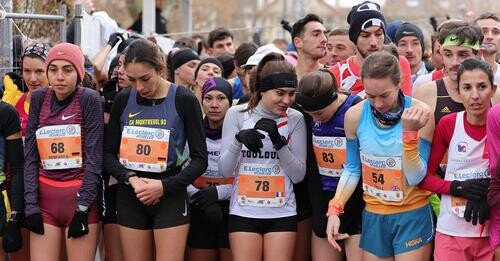
The giant tree a few metres from the start line isn’t the only obstacle runners have to avoid—street lamps and curbs make it almost impossible to avoid falling. Once one person goes down, there is a domino effect, as you see in the video.
The race had 63 men who finished under 30 minutes, with Ethiopia’s Halie Bekele taking the win in 27:29, one second ahead of Vincent Kibet of Kenya. Bekele was fourth in the men’s 5,000m at the 2019 World Championships in Doha. Jimmy Gressier of France finished third in a European-leading time of 27:43.

In the women’s race, Kenya’s Mercy Cherono won with a time of 30:55 seconds. Cherono won silver in the 5,000m at the 2013 World Championships in Moscow.
Welsh marathoner Josh Griffiths, who starred in the iconic airport half-marathon video, said the start was a disaster. Many other elites are calling on the organization committee to move the start line past the tree in 2023. “It was complete carnage,” one runner said.
Changing any part of the course would require the race organizers to obtain a new certification from World Athletics. The race is currently listed as an Elite Label race on the World Athletics calendar.
(12/30/22) Views: 122Marley Dickinson
British man Gary McKee to make history for most marathons in one year
Some people’s New Year’s resolution is to quit drinking. For others, it’s to run a marathon. But for Gary McKee of Cleator Moor, in northwestern England, his resolution was to quit drinking and run a marathon–every single day for a year. McKee is two days away from completing his unbelievable challenge of running 365 consecutive marathons.
McKee, who has gained the nickname The Marathon Man, has covered more than 9,500 miles (15,289 kilometers) in 363 days while raising more than $2,000,000 for charity. His distance covered is equivalent to running across Canada three and half times. McKee’s challenge will come to an end on New Year’s Eve.

McKee, 53, told The Guardian, that he intends to have one celebratory beer to celebrate his efforts and year-long drought.
The father of three routinely wakes up at 5 a.m. and heads out on his marathon before starting his work shift at a nearby power plant at 2 p.m.

McKee has completed most of his marathons between three and a half and four hours. In 2021, McKee completed 110 marathons in a row.
McKee is running for Macmillan Cancer Support and Hospice in West Cumbria, which supported his father through a cancer diagnosis in 1997. His father fully recovered from cancer but died from an unrelated illness in 2005.
You can follow McKee’s 365 challenge on his Strava or Twitter page.
(12/30/22) Views: 107Marley Dickinson
Adam Craig now setting sights on going the distance at 2024 Olympics
Borders athlete Adam Craig is setting his sights high but keeping his feet on the ground after completing his first competitive marathon.
Craig finished this month’s Valencia Marathon in two hours 13 minutes and 58 seconds and is now intent on improving on that to boost his hopes of qualifying for the 2024 Olympics in France.

“I’d love to be able to run at the Paris Olympics,” the 27-year-old told us. “Those sorts of races are the ones that I want to be in.”
UK Athletics requires athletes to achieve specified times to be considered for Olympic selection and to make it to the French capital, Craig reckons he will need to better his debut effort over 26 miles on the Spanish east coast by about five minutes, though target times have yet to be set for 2024.

Craig remains focused on getting faster as 2023 goes on, however, and isn’t letting himself think about the Olympic Games too much just yet.
“Obviously to think about the Olympics is good to fuel the fire, but I’m also not putting everything on that just because very few people actually get to go to the Olympics and compete on that stage,” he said.
“It’s certainly something that’s on my mind but it’s not always to the forefront.”
Craig is planning to compete in two marathons in 2023 and how he fares in those races will determine whether he’s ready for the Olympics or not.
“If next year goes really well and I get another two marathons and can knock another couple of minutes off that time, then I’d probably go into 2024 thinking ‘right, let’s try and qualify for this’, but it could go really well or it could go the other way,” he said.
Whether they’re trying to qualify for the Olympics or just aiming to cover the distance, a runner’s first marathon is a step into the unknown, so in preparation for the Valencia Marathon – won by Kenyan Kelvin Kiptum in 2:01:53, the fastest debut ever over that distance – Craig asked peers and coaches for advice.
“Everyone that I spoke to kind of said the same thing, which is that I can give you my experience of a marathon but yours will be totally different,” he said.
"Everyone said you get to 20 miles and that’s when the race starts. I saw that 20 mile-sign and I thought ‘OK, yeah, I’m in a position now where I can switch that race head on and start looking to push on, even if it’s just a second or two per mile quicker’.”
Having got that race, held annually since 1981, under his belt, finishing 42nd out of almost 22,000 runners, Craig reckons he’s got plenty of room for improvement.
“In our build-up, me and my coach decided that we’d play it quite safe and leave a few stones to be turned over next time around, so we didn’t go away and use any kind of heat or altitude training or anything like that,” he said.
“There’s room for improvement, which is quite exciting.”
It’s often said by those running them that marathons are just as tough mentally as they are physically, the psychological aspect of keeping running for that long often being daunting even for seasoned athletes, and that’s something Craig agrees with now he’s got first-hand experience of going the distance.
He says he was forewarned and forearmed about the mental strength required before heading over to Spain and decided to break up the race into sections in his mind to give himself a sense of achievement along the way rather than just being faced with a distance close to that from his former home-town of Lauder to Edinburgh as a single sizeable challenge.
Even adopting that strategy, he admits he did have a wobble early on, however.
“About eight or nine kilometers in, I remember thinking ‘I’m not even a quarter of the way through this yet – there is a long way to go’,” he recalled.
“I definitely had dips in the race, but I had lots of little markers along the way, which helped me switch off and almost lose focus of where I was in the race or how far I had to go.”
Craig, currently racing for Team New Balance Manchester, has previously enjoyed success over shorter distances, competing for Great Britain over half-marathon and 10,000-meter distances, but is now looking to play a longer game.
(01/01/23) Views: 105Dan Challis
Andre De Grasse switches coaches, heading into 2024 Olympics
After a season of highs and lows, Canada’s reigning 200m Olympic champion, Andre De Grasse, has switched things up for 2023. The six-time Olympic medalist, along with his partner, 2016 Olympic medalist Nia Ali, has moved to Orlando, Fla., to work with Irish sprint coach John Coghlan, leaving his controversial coach Rana Reider, with whom he spent three seasons.
De Grasse says he wanted to stay in North America, and became interested in Coghlan’s coaching success through 100mH Olympic champion Jasmine Camacho-Quinn, who went on to win the 100 hurdles for Puerto Rico at the Tokyo Olympics, and his agent Paul Doyle.

The Canadian 200m record holder told the CBC that his mindset and motivations have changed since the last Olympic cycle. “I’m getting older, so I was just trying to do something different this time around,” said De Grasse. “I believe having a smaller crew will benefit me.”
De Grasse’s partner, Ali, won gold in the women’s 100mH at the 2019 World Championships in Qatar and has her eyes on a Team U.S.A. spot for the 2024 Games.

The 28-year-old told CBC the move was more about a fresh start heading into the 2024 Paris Olympics than controversy around his former coach and his Tumbleweed Track Club in Jacksonville, Fla. “I just wanted to try something different,” said De Grasse. “I liked the idea of Orlando, and we thought it would be a good spot for our kids as well.”
In 2022 Reider, who has guided numerous athletes to Olympic and world championship medals, was under investigation by U.S. Center for SafeSport for alleged sexual misconduct. Reider was also the coach of Nigerian sprinter Blessing Okagbare, who was suspended during the 2020 Olympic Games after a positive test for steroids; earlier this year, she was handed an 11-year suspension by the Athletics Integrity Unit (AIU) for multiple anti-doping offenses, on top of the original offense.
In November 2021, Athletics Canada withdrew its funding of Canadian athletes being coached by Reider, including De Grasse, due to the ongoing investigation.
At the 2022 World Championships in Eugene, Ore., where De Grasse helped Canada’s 4×100-meter relay team win gold, Reider was seen trying to enter the athlete warmup area after his coaching accreditation was revoked by World Athletics, due to his ongoing investigation, and he was removed from the premises.
The Olympic 200m champion struggled to find his fitness at the beginning of the 2022 season and was sidelined due to COVID-19 three weeks before the world championships, where he bowed out of the 100m in the semis and was listed as a DNS in the 200m heats.
With three major championships on the calendar over the next three years, De Grasse stressed that he wants to improve. “I felt like I wanted a little bit more attention to detail and stuff like that going into my next Olympics,” De Grasse told CBC.
(12/30/22) Views: 102Running Magazine
What Running a Mile Every Day for a Month Did to This Guy's Body
Fitness YouTuber Stan Browney tracked the impact on his weight and gains.
YouTuber and calisthenics enthusiast Stan Browney has taken on all kinds of fitness challenges before, usually revolving around churning out vast numbers of reps on bodyweight exercises like pushups and situps—but in his most recent video, he admits that he can be guilty of skipping cardio, so for his new month-long challenge he decides to run a mile every day for 30 days. Not only that, but with each run, he has to try and hit a mile in the fastest time possible. And if he misses a day for any reason, the next day he has to run double the distance.
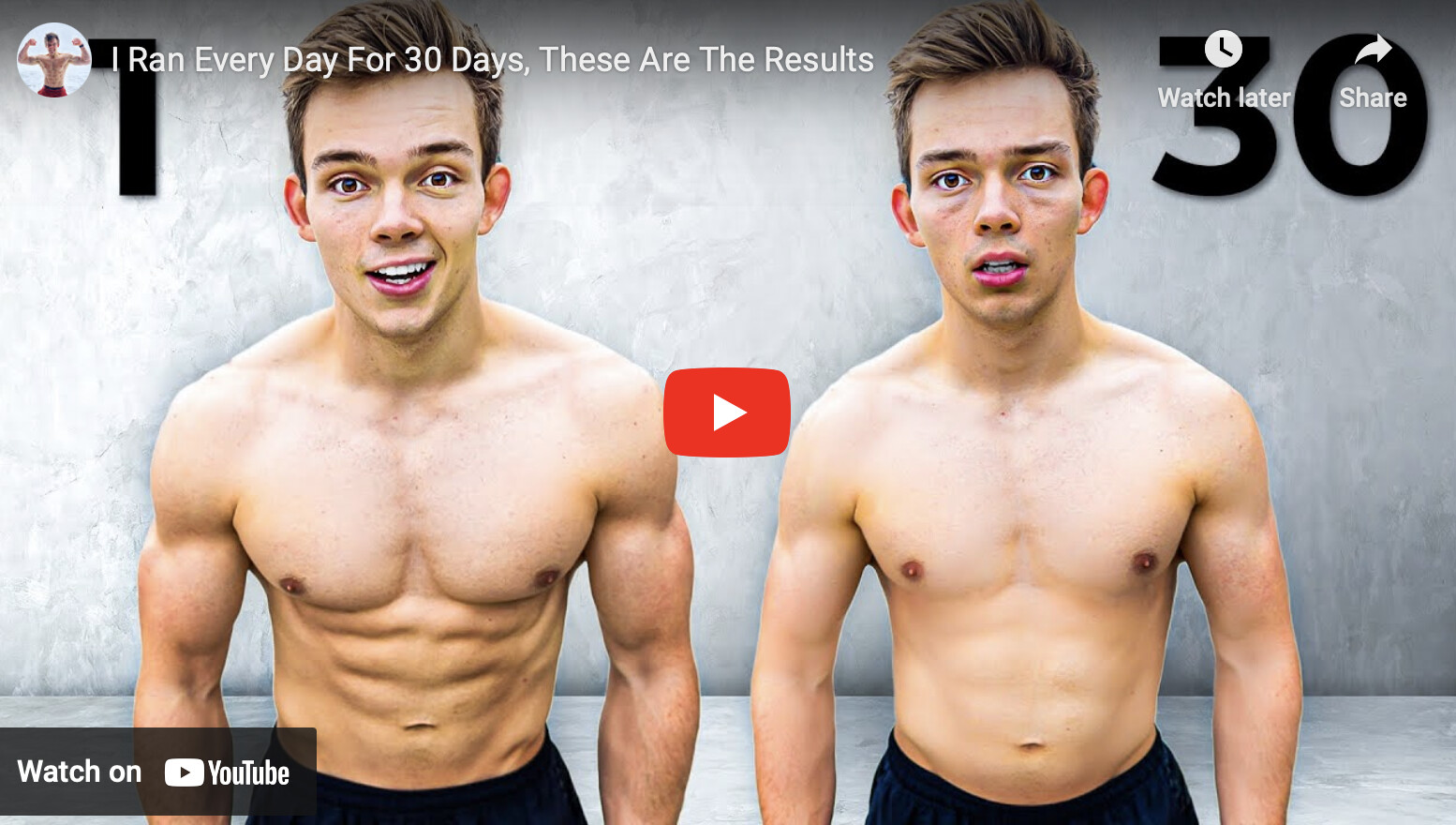
"I hope I learn a lot about running, and I hope my form improves, but also my time," he says, and he ropes in his brother Jorg and "crazy fit" friend Arjen to join him.
On day one, Stan completes his first mile in 5:27. Jorg takes 7:12, while Arjen manages it in just 4:58. However, contrary to their belief that their performance will naturally improve with practice, by the time they get to day 15 the three guys actually all have worse times than when they started, possibly due to the cumulative fatigue of running every day. Even though it is a relatively short distance, they're not allowing their bodies sufficient rest or recovery time.
On day 30, all three have improved on their original times: Jorg can now run a 6:23 mile, Stan's new time is 5 minutes exactly, and Arjen hits a new PR of 4:53.
At the start of the challenge, Stan weighed 174.6 pounds, Jorg weighed 202.4 pounds, and Arjen weighed 162 pounds. After a month of running every single day, Jorg has lost 4 pounds and is now 198.4, while Stan has maintained his weight, and Arjen has actually gained a pound in the form of muscle. "That's interesting, because I thought the running would make you lose gains," he says.
(01/01/23) Views: 98Men’s Health
Covid Completely Changed the Way We Stay Healthy—Here's How
Which hard-earned lessons about staying well have stuck.The height of the Covid pandemic was brutal. Three years after this all started, leading scientists tell us what hard-learned lessons have stuck when it comes to staying healthy now—and through whatever comes next.
Risk Management Is Huge

Before the pandemic, how often did you really think about defending yourself from respiratory bugs? “Most people were shrugging off the risk. Respiratory viruses weren’t that big of a thing,” says Amesh Adalja, M.D., an infectious-disease physician at the Johns Hopkins Center for Health Security. Covid forced us all to take viruses seriously on a daily basis, and it highlighted the power our personal habits—handwashing, masking, getting vaccinated, determining which indoor situations to take the risk on or not—can have over the likelihood of getting sick. Covid also made it clear that not managing risk had consequences beyond a tough stay in the hospital or, in mild cases, losing a few sick days. One 2022 study found that a person infected with Covid was 33 times as likely to suffer from a first-time arterial blood clot during the first week of infection as someone who had never had the disease. Respiratory viruses can trigger other real medical emergencies, and these compounding factors can damage major organs and raise your risk of autoimmune conditions. Even relatively mild Covid can cramp your breathing and gym stamina for months.
Vitamin D Is a Health Hero
Prepandemic, it was easy to think of vitamin D as a bone-building nutrient found in milk, and that was kind of it. But then Covid-era research showed a higher risk of testing positive for the disease among people with a vitamin D deficiency compared with people whose levels were fine. Experts suspected that optimal amounts of the vitamin may help shield you from Covid, as it does with other respiratory illnesses.
There’s no clear conclusion on that yet, says Eric Feigl-Ding, Sc.D., chief of the Covid-risk task force at the New England Complex Systems Institute. But doctors have long known that the nutrient plays a crucial role in immune health—and about one in three American adults is not getting enough.
Vitamin D helps your immune system “across the board,” says Feigl-Ding. It rallies parts of that system to get working against microbes, and it may also reduce inflammation—a process that plays a role in a huge number of health conditions, including cancer, heart disease, type 2 diabetes, Alzheimer’s, rheumatoid arthritis, and even depression.
If you already have enough vitamin D, extra won’t benefit you. (A blood test can tell you your level.) To stay at a healthy amount, aim for five to 30 minutes of midday, sunscreen-free sun exposure at least twice a week (your body uses it to make its own vitamin D) and eat D-rich foods. That’s salmon, trout, and fortified cow’s or plant milk. If you don’t eat these foods or get that much direct sunlight, consider taking a supplement as an “insurance policy” in the winter, Feigl-Ding advises.
Long Covid Is Helping Us Understand Other Illnesses
Even one of the pandemic’s most devastating and puzzling legacies, long Covid, may help drive up our understanding of health. This wide swath of troubles that linger for about half of people who’ve had symptomatic Covid—everything from joint pain to brain fog—may not end up being unique to this virus. And it’s creating a surge of interest in studying seemingly similar but often dismissed conditions like chronic fatigue syndrome (CFS) and post-treatment Lyme disease syndrome.
We’re still learning about long Covid, but among the theories about what causes these symptoms are organ damage, chronic inflammation (including of the central nervous system), and reservoirs of virus remaining in the body, Feigl-Ding says. These are some of the same factors scientists think may be involved in CFS.
Knowing more about long Covid could shed light on these other conditions, too, explains Dr. Adalja. What’s very clear, at least, is that “these illnesses are valid,” says William Schaffner, M.D., a professor of preventive medicine and infectious diseases at the Vanderbilt University School of Medicine.
The Basics Are a Big Deal
Health issues that develop over time, like stroke and type 2 diabetes, have been on the rise for years. About 60 percent of U. S. adults have at least one chronic illness, while four in ten have two or more. Yet until you’re diagnosed with one, the danger of chronic illness can feel far off.
Covid made it clear that people with chronic conditions were at a higher risk for severe illness, and it made people take an honest look at their health habits. Obesity, for instance, went from being “something I’ll get around to dealing with” to being a risk factor for complications from a scary new virus, says Dr. Schaffner. To clarify the synergy, Dr. Feigl-Ding tells people to “picture a glass.” Every risk factor—eating excess sugar, not exercising, not treating high blood pressure—adds water to the cup, while healthy habits decrease the water level. Covid can push the water over the rim and uh-oh.
The takeaway here is more of a reminder, really: You know what to do. You can prevent chronic illnesses by eating well, being active, avoiding tobacco, and being moderate with alcohol. Those small lifestyle habits may well save your life.
(01/02/23) Views: 96Men's Health
Tips for Running Alone
When running by yourself, it’s important to take safety precautions and to also have plenty of strategies for beating boredom. Here are some safety and motivation tips for running alone.
How to Stay Safe During Solo Runs
Common sense is key when running solo. Follow these essential tips to stay safe.

Let someone know where you’re running
Before you head out for your run, make sure you let someone else know where you’re running. Also tell them approximately how long you’ll be running for. If you’re not back when expected, they’ll know where to look for you.

Carry identification
Put your driver’s license and your medical insurance card (in case you get injured) in your pocket or wear an ID tag on your shoe. If you’re wearing an ID tag or bracelet, make sure it has an emergency contact number on it. Whenever possible, try to run with your cell phone, and save your ICE (In Case of Emergency) numbers.
Be visible
It’s best to run during daylight hours but, if you have to run in low-light conditions, make sure you’re visible. Wear white, yellow, or orange clothes if you’re running in the early morning or at night, even at dusk or in rainy weather.
Also, make sure you have reflective gear on. Although some items (running shoes, jackets) already have reflective pieces on them, it doesn’t hurt to add more.
Stick to familiar, populated routes
Running alone is not the time to try out a new, unfamiliar running route or an isolated trail. Stick to running routes in your neighborhood or local park that you know very well, so you don’t have to worry about getting lost or risk putting yourself in an unsafe situation. If you run in a park, run during peak exercise hours, so you know they’ll be lots of people around.
Limit your distractions
It can be tough to run without music, but cutting off your awareness and sense of hearing means you can’t hear oncoming cars, cyclists yelling to move, dogs, or other threats. If you really can’t run without music or something else to listen to, keep the volume low and one earbud out.
Be aware
Pay attention to your surroundings and what’s around you so you know where to go if you did need help. If you let your mind wander too much, you may find yourself running into an unsafe area.
How to Stay Motivated When Running Alone
Getting motivated to start and keep running can be harder when running by yourself. Here some ways to shake up your running routine and keep going.
Try some self-talk
If you’re running alone and struggling, give yourself a pep talk. Tell yourself that you’re not physically tired — you’re just mentally fatigued and you can push through it. Say to yourself things like, “I’ll have some water in five minutes — that will make me feel better.” You may want to keep repeating a running mantra, like, “Think strong! Be strong!”
If you’re doing your longest run ever, remind yourself how proud you’ll feel when you’re finished.
Use mental strategies and mind games
Arm yourself with different mental tricks and games to keep your mind occupied and help you stay motivated to continue running. Here’s a game to try: Pick out a specific article of clothing, such as black running shorts, to look for during your run. Then count how many runners you see wearing that piece of clothing.
Mix it up with a random interval workout
Try doing a fun interval workout. Pick a landmark in the distance, such as a tree or a stop sign, and pick up the pace until you get to it. After you recover at an easy pace for a minute or two, choose another landmark and then speed up again.
(12/31/22) Views: 95Christine Luff


